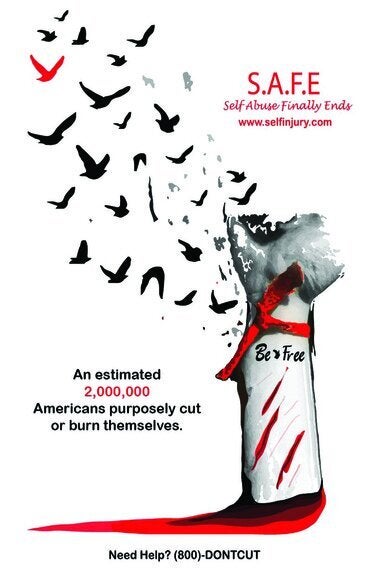Warning: this article may contain emotional triggers.
March is self injury awareness month in the United States, Canada, and Western Europe. There are two-million cases, mostly youth, reported annually in the United States. The stigma of self-injury needs to be broken.

Self-injury, sometimes called self-harm, is any deliberate, non-suicidal behaviour that inflicts physical injury to your body. Self-harm by itself isn't suicidal behaviour. But if the emotional distress that causes self-injury continues, it can cause suicidal thoughts.
Self-injury is an attempt at instant relief from an emotional pain. We often think of cutting when it comes to self-injury, but self-injury includes actions like burning, pulling hair out in clumps, breaking bones, scratching, bruising, and drinking something harmful like bleach. The physical pain of self-harm is often easier to deal with than the emotional pain behind it. Self-injury is a coping mechanism. It can help you deal with intense emotional distress by creating a calming sensation or the feeling that you have control of a situation. It's also real pain. You can see the injury and know why it's hurting as opposed to emotional pain.
Self-injury happens across all genders, races, beliefs and ages. According to the organization Healthy Place, one in five women and one in five men engage in self-injury. Some 90 per cent of self-harm starts in adolescence, usually around age 14 and continues into the 20s. It may even continue or start later in life. Because self-injury is more common among girls, it's led to the gender based stigma that girls who self injure are attention seekers.
How do you help someone who self-injures?
DON'T
- Get angry or show disgust. Negativity alienates and ultimatums only drive the person away from you.
- Deny the problem. It's not the person's problem or just one of his/her 'things'. It's not a fad, social statement or a phase he/she will grow out of.
- Hide sharp objects. If the person wants to self-injure, he/she will find a way.
- Judge the severity of the injury as an indicator of the level of emotional pain. A severely depressed person might only have scratches instead of cuts.
- Assume the person is okay once in treatment. Recovery from self-injury can take months, maybe even years.
DO
- Stay calm. Freaking out won't solve anything. It will just close all lines of communication.
- Talk. Be non-judgmentally supportive. Ask "Why are you doing this to yourself?"
- Take the problem seriously. It's not about attention-seeking or a growing pain.
- Seek treatment. Accompany the person to the doctor or counsellor but don't be pushy about privacy.
- Find the triggers. Focus on the underlying problems rather than just the injury.
- Trust the person. Self-injury is just a small part of the person.
For information or assistance, contact Mental Health America or S.A.F.E. Alternatives
#SIAD on Twitter
ALSO ON HUFFPOST:
